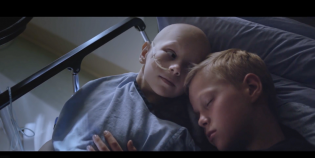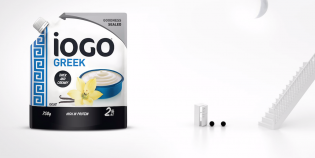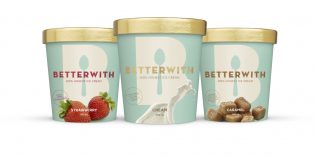Prouk. For more than four decades, it’s been a one-word exclamation mark for pivotal events in the Canadian advertising industry. It stands for a multiplicity of values and attitudes-for candour, controversy, rebelliousness; for dreaming big and taking risks; for not suffering fools gladly and taking no prisoners. Gary Prouk, through the advertising he’s created, through the agencies he’s built and the opinions he’s put forth, has become arguably the most discussed Canadian ad practitioner of our time.
As is the case with many people who produce a life of significant impact, Gary Prouk’s beginnings were humble. “I was born in ’44 and spent my early childhood around the Ossington-Dundas area of Toronto,” he says. “We were poor and Polish. My father walked out on us when I was four. My mother was eight months pregnant with my brother.” In high school, he edited the poetry magazine and captained the basketball team to a city championship. Next, Prouk spent a year studying English at the University of Toronto’s Victoria College, but left because he was exhausted from working at too many jobs to pay his way. At the same time, he discovered jazz and the beat movement. Jack Kerouac and Miles Davis became role models.
So he went to New York intending to write, but instead spent most of his time in clubs and hanging around Washington Square. About a year later, he returned to Toronto, quickly making the Bohemian Embassy on St. Nicholas Street his preferred hangout. He read his poetry there for $5 a set. “All I really wanted to be was a poet,” he recalls. “I really had no ambition.”
Then the father of one of Prouk’s girlfriends suggested he meet the father of another of his girlfriends, who showed Prouk’s poems to George Sinclair, the head of MacLaren Advertising. “They hired me at $35 a week ($1,800 a year) to write ads for Hunt’s and Woman’s Bakery and Eno’s Fruit Salts.”
Less than a year later, he found that trading his $1,800-a-year job at MacLaren for a $5,000-a-year stint at Ronalds-Reynolds was as simple as looking at a bar coaster. He’d met Vic Brooker, the creative director at R-R, in the bar of the Lord Simcoe Hotel in Toronto. One day, Brooker slid a coaster over with a proposed $5,000 annual salary written on the back. Prouk didn’t have to think it over.
Partnered with an art director named Dave Garrett, he quickly won a New York Art Director’s Show award for a Ballantine’s scotch whisky ad. “Two things became evident,” Prouk remembers. “I knew I had a talent for writing advertising. And I was really impressed with the fact something you created could be seen by millions.”
Prouk began collecting ads he admired and pinning them to his wall. In 1967, Doyle Dane Bernbach came to Toronto and Prouk was hired by Ed Vallenti, an Italianate, wild man creative director from Brooklyn who reported directly to Bill Bernbach. Prouk remembers his first day at DDB’s office in New York, walking down the hall to meet Leon Meadow, and passing the offices of Helmut Krone, Bert Steinhauser, Bob Levenson, Ron Rosenfeld and Mary Wells. “All the ads on my wall, were on their walls. Only theirs were proofs. They’d written them.”
After Vallenti’s departure, Prouk became creative director of DDB Canada. He was only 26. A year later, while maintaining his Canadian posting, and at the behest of Bernbach, he moved back to New York. For two years, he commuted to Toronto and Montreal, all the while absorbing invaluable tutelage from a man who became both mentor and friend. “I remember once he was looking at some work and I defended it by saying [the client’s] budget was low. Bill put his hand on the table, looked at me with his soft blue eyes and told me if we were to be friends, I should never apologize or make excuses. Only two people were responsible for the work-the copywriter and the art director. Budgets, directors, editors, typographers…you name it, are not to blame.”
Returning to Toronto in 1970, and with the help of talented creatives like Lou Delamarter, Andre Morkel, Gene Beck and Ross Jarvis, Prouk’s creative output was prodigious and award-winning. Among his most famous ads: the “Mona Lisa” commercial for Cadbury.
By the late ’70s, DDB had grown to worldwide billings of nearly $1 billion. At least on an international scale, maintaining the original level of excellence was getting tough. Coincidentally, Prouk had become aware of another New York agency-Scali McCabe Sloves. One day he saw an ad in The New York Times for Hertz car rentals, written by SMS’s Ed McCabe. The headline stated “For years, Avis has been telling you they were only number two. Now we’re going to tell you why.” Prouk was impressed. He was also receptive to a phone call from Richard Kelly, who SMS was headhunting to open a Toronto office. They had lunch and decided to start it up.
Drafting a letter of resignation to Bill Bernbach was agonizing, Prouk recalls. He was drunk for two days after he sent it, but still cherishes the eloquent letter he received in return containing the core thought that you never really leave Doyle Dane Bernbach. “He and my mother gave me my value system. DDB was the family I never really had. Bill was the father I always wanted.”
At Scali Toronto, Kelly and Prouk started with nothing. “All we had was a belief we could do something great. We wanted business that was ours. We didn’t want New York losses to screw us.” The objective was met through a humbling process in which the new proprietors felt like they’d been sent down by the New York Yankees to a farm team. The breakthrough was a 1978 campaign for Nabob coffee in which an actor takes a hammer to rival Maxwell House’s soft package. “[Nabob] went from virtually nowhere to a 21 share in a year and a half. It became a Harvard MBA case history, studied at the London School of Economics and changed a law. You can’t do that kind of comparative advertising anymore.”
Nabob begat Ralston Purina which begat Cadbury which begat Unilever which begat Labatt’s Blue, probably the lengthiest, most hotly contested account acquisition in the history of Canadian advertising. In 1985 and again in 1993, Scali was Marketing‘s Agency of the Year.
The Scali experience ended for Prouk over a decade ago with SMS’s transition into the Lowe network. Prouk left, he admits, acrimoniously. “Martin Sorrell wired me just before Christmas one year and instructed me to fire 17 people. I sent him back a message explaining I don’t fire people, I just hire them.” (At the time, Sorrell’s WPP network owned part of Scali.)
Still, Prouk feels privileged to have spent most of his career during the golden years of advertising creative, in two of the greatest agencies of all time during their heydays. He also feels sorry for young people in the business now. “Conglomerates have ruined it,” he says with characteristic bluntness. “In Toronto, most ad people’s idea of the big picture is a five by seven glossy from Black’s.”
Caustic darts aside, Gary Prouk is still in the business, running The Sebastian Consultancy in Toronto and working for clients like Natrel and Lindt. “I just want to do things I like doing with people I like working with. I don’t want to repeat my life.”
DOUG LINTON is acting chairman of the board of the newly formed Canadian Advertising Museum. His profile of Ian Mirlin appeared in the June 30 issue










